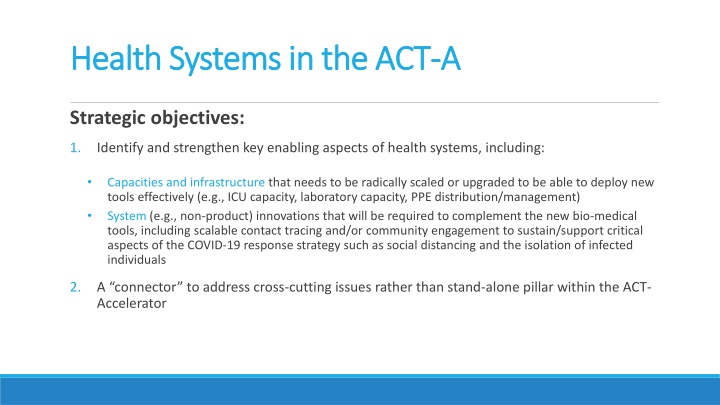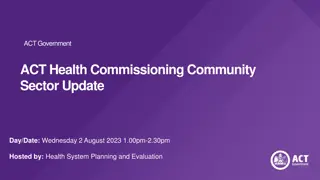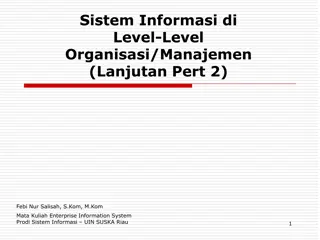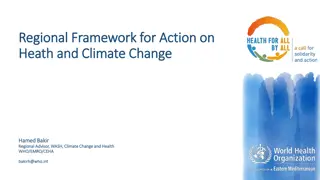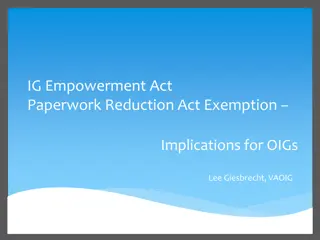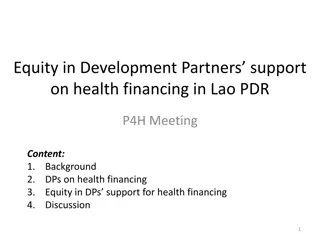Enhancing Health Systems in the ACT
Identify and strengthen key aspects of health systems in the ACT, including capacities and infrastructure, non-product innovations, and community engagement strategies to support the COVID-19 response. The initiative focuses on practical solutions, equity, and cross-learning while structuring workstreams to address critical areas such as PPE procurement, frontline healthcare worker protection, and supply chain management.
Download Presentation

Please find below an Image/Link to download the presentation.
The content on the website is provided AS IS for your information and personal use only. It may not be sold, licensed, or shared on other websites without obtaining consent from the author.If you encounter any issues during the download, it is possible that the publisher has removed the file from their server.
You are allowed to download the files provided on this website for personal or commercial use, subject to the condition that they are used lawfully. All files are the property of their respective owners.
The content on the website is provided AS IS for your information and personal use only. It may not be sold, licensed, or shared on other websites without obtaining consent from the author.
E N D
Presentation Transcript
Health Systems in the ACT Health Systems in the ACT- -A A Strategic objectives: 1. Identify and strengthen key enabling aspects of health systems, including: Capacities and infrastructure that needs to be radically scaled or upgraded to be able to deploy new tools effectively (e.g., ICU capacity, laboratory capacity, PPE distribution/management) System (e.g., non-product) innovations that will be required to complement the new bio-medical tools, including scalable contact tracing and/or community engagement to sustain/support critical aspects of the COVID-19 response strategy such as social distancing and the isolation of infected individuals 2. A connector to address cross-cutting issues rather than stand-alone pillar within the ACT- Accelerator
Guiding principles Guiding principles Be practical --not solving all system problems Be focused on a functional and efficient delivery system for key products (vaccine, therapeutics, diagnostics) Aim at near-term practical solutions, synchronizing with the time tables of vaccine, therapeutics and scaling-up of diagnostics Country-focused, considering different challenges for typologies of countries Emphasis on cross-learning and knowledge sharing (not prescriptive) Equity lens
Structure: Structure: 7 Workstreams ACT-A Health Systems Workstreams Details Lead Support Public sector and community healthcare workers (e.g., PPE procurement/deployment, infection control procedures, advocacy) Critical/ICU, oxygen/ventilators; note: link to Clinical Care Consortium for procurement/supply MIS 2 COVID-19 module, rapid facility surveys, surveillance, WHO COVID-19 portal Domestic (budgets, PFM to frontline), external resources, decentralized facility financing Protecting frontline health workers GFATM, UNICEF Clinical care WHO, UNITAID Integrated data management France GFATM Financing World Bank, WHO GFATM, Gavi Community engagement/systems GFATM, UNICEF, World Bank Community-led responses Private sector Contracting with private sector, firms, NGOs World Bank GFATM Key elements of supply chain (those not covered by the three product lines) E.g., cold chain Gavi (cold chain) GFATM, UNICEF
e.g. Working Group on Community e.g. Working Group on Community- -Led Responses Led Responses GROUP ROLE / DELIVERABLES Advise other pillars and workstreams on community-related objectives and responses Leverage relevant regional and global initiatives (on data collection, misinformation, etc.) Collate, translate, disseminate and orient countries towards: Best practices and lessons in community-led responses, engagement and behavior change Existing technical guidance and tools Mapping of available assets and resources (partnerships, service providers, technical assistance, funds, etc.) Create standard checklist for community-related country preparedness aspects Organize direct country support upon request Organize upstream flow of social and behavioral data, community led monitoring, knowledge, insights and feedback Organize the documentation of the global process and lessons over the preparedness and implementation period
